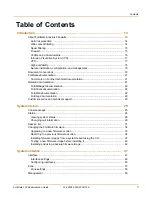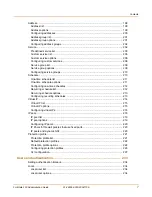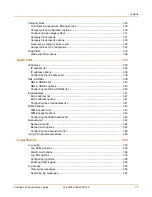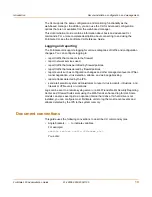
16
01-28006-0003-20041105
Fortinet Inc.
VLANs and virtual domains
Introduction
NAT/Route mode
In NAT/Route mode, the FortiGate unit is a Layer 3 device. This means that each of its
interfaces is associated with a different IP subnet and that it appears to other devices
as a router. This is how a firewall is normally deployed.
In NAT/Route mode, you can create NAT mode policies and Route mode policies.
• NAT mode policies use network address translation to hide the addresses in a
more secure network from users in a less secure network.
• Route mode policies accept or deny connections between networks without
performing address translation.
Transparent mode
In Transparent mode, the FortiGate unit does not change the Layer 3 topology. This
means that all of its interfaces are on the same IP subnet and that it appears to other
devices as a bridge. Typically, the FortiGate unit is deployed in Transparent mode to
provide antivirus and content filtering behind an existing firewall solution.
Transparent mode provides the same basic firewall protection as NAT mode. The
FortiGate unit passes or blocks the packets it receives according to firewall policies.
The FortiGate unit can be inserted in the network at any point without having to make
changes to your network or its components. However, some advanced firewall
features are available only in NAT/Route mode.
VLANs and virtual domains
Fortigate Antivirus Firewalls support IEEE 802.1Q-compliant virtual LAN (VLAN) tags.
Using VLAN technology, a single FortiGate unit can provide security services to, and
control connections between, multiple security domains according to the VLAN IDs
added to VLAN packets. The FortiGate unit can recognize VLAN IDs and apply
security policies to secure network and IPSec VPN traffic between each security
domain. The FortiGate unit can also apply authentication, content filtering, and
antivirus protection to VLAN-tagged network and VPN traffic.
The FortiGate unit supports VLANs in NAT/Route and Transparent mode. In
NAT/Route mode, you enter VLAN subinterfaces to receive and send VLAN packets.
FortiGate virtual domains provide multiple logical firewalls and routers in a single
FortiGate unit. Using virtual domains, one FortiGate unit can provide exclusive firewall
and routing services to multiple networks so that traffic from each network is
effectively separated from every other network.
You can develop and manage interfaces, VLAN subinterfaces, zones, firewall policies,
routing, and VPN configuration for each virtual domain separately. For these
configuration settings, each virtual domain is functionally similar to a single FortiGate
unit. This separation simplifies configuration because you do not have to manage as
many routes or firewall policies at one time.
Summary of Contents for FortiGate 100
Page 24: ...24 01 28006 0003 20041105 Fortinet Inc FortiLog documentation Introduction ...
Page 72: ...72 01 28006 0003 20041105 Fortinet Inc Transparent mode VLAN settings System network ...
Page 80: ...80 01 28006 0003 20041105 Fortinet Inc DHCP IP MAC binding settings System DHCP ...
Page 114: ...114 01 28006 0003 20041105 Fortinet Inc Access profile options System administration ...
Page 232: ...232 01 28006 0003 20041105 Fortinet Inc CLI configuration Firewall ...
Page 244: ...244 01 28006 0003 20041105 Fortinet Inc peergrp Users and authentication ...
Page 320: ...320 01 28006 0003 20041105 Fortinet Inc service smtp Antivirus ...
Page 366: ...366 01 28006 0003 20041105 Fortinet Inc syslogd setting Log Report ...
Page 380: ...380 01 28006 0003 20041105 Fortinet Inc Glossary ...
Page 388: ...388 01 28006 0003 20041105 Fortinet Inc Index ...


































